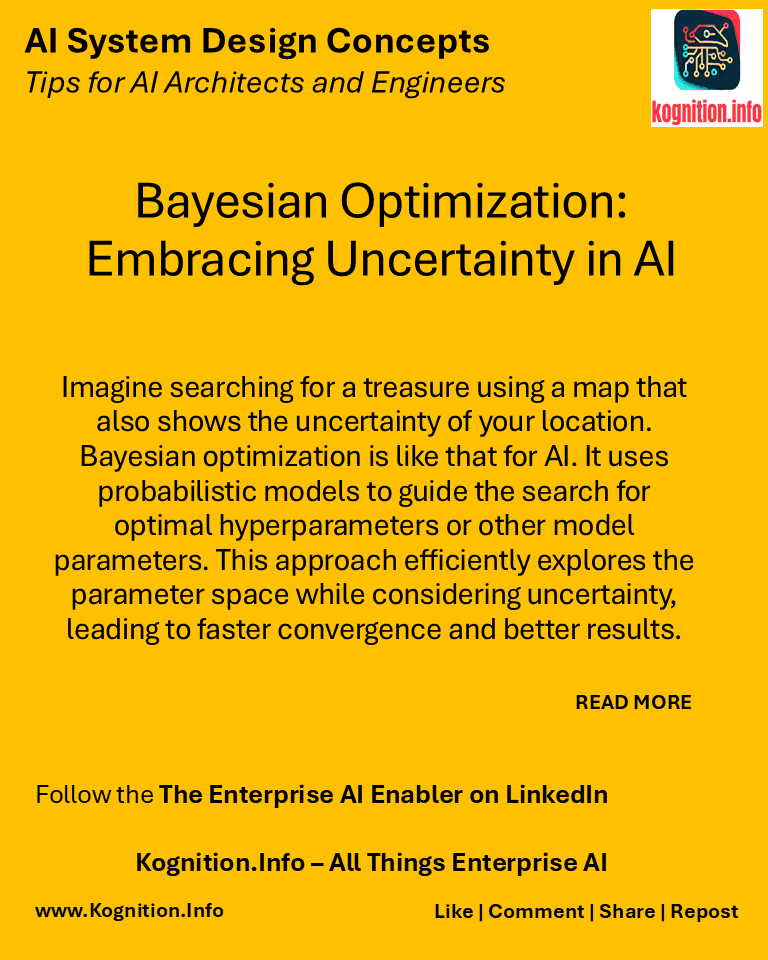
Imagine searching for a treasure using a map that also shows the uncertainty of your location. Bayesian optimization is like that for AI. It uses probabilistic models to guide the search for optimal hyperparameters or other model parameters. This approach efficiently explores the parameter space while considering uncertainty, leading to faster convergence and better results.
Use cases:
- Hyperparameter tuning: Finding the best hyperparameter settings for machine learning models.
- Model selection: Optimizing the architecture and configuration of neural networks.
- Experiment design: Efficiently exploring design parameters in scientific experiments.
How?
- Define the objective function: Specify the function to be optimized (e.g., model accuracy).
- Choose a surrogate model: Select a probabilistic model (e.g., Gaussian Process) to approximate the objective function.
- Define an acquisition function: Use an acquisition function (e.g., Expected Improvement) to guide the search for the next point to evaluate.
- Iteratively evaluate and update: Evaluate the objective function at the chosen point, update the surrogate model, and repeat.
Benefits:
- Efficient exploration: Effectively explores the parameter space with fewer evaluations.
- Handles uncertainty: Takes into account uncertainty in the objective function.
- Global optimization: Can find global optima even with complex, non-convex objective functions.
Potential pitfalls:
- Computational cost: Can be computationally expensive for high-dimensional parameter spaces.
- Choice of surrogate model: Selecting an appropriate surrogate model is crucial for performance.
- Sensitivity to initial points: The initial points chosen for evaluation can influence the optimization process.
